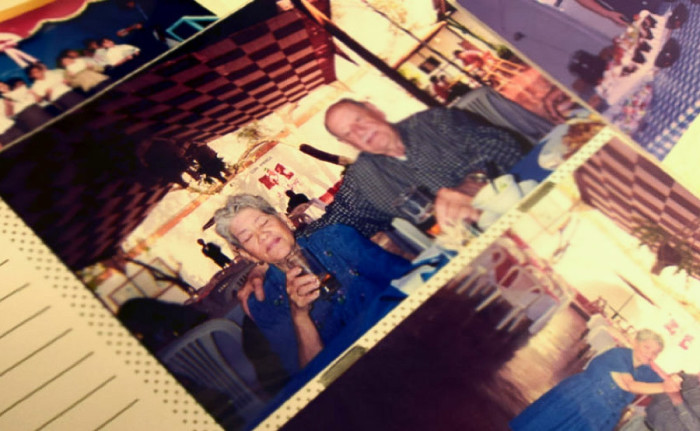
The first time I had a panic attack, my grandma massaged a raw egg against my head.
Then she cracked it open into a clear glass filled with water so she could examine the insides.
Grandma was performing a limpia — a traditional cleansing process. The idea is that the egg would absorb the negative energy that were causing me discomfort. Spiderweb strands of the egg white covered the round yellow yolk inside the glass like a moon covered in clouds on a foggy night.
“You got chucaque,” my abuelita Rosa told me, nodding with utmost certainty as she held the glass to the light. The symptoms of chucaque are a combination of nausea, upset stomach, racing heart, shortness of breath and sweating.
Grandma’s remedy for it was yanking on a handful of my hair until I heard a subtle “pop” against my scalp.
Mental illness moves differently across cultural and international borders, and so does mental health care. I’ve experienced this firsthand as a Peruvian immigrant living in the United States.
I don’t think I heard the words “depression” or “anxiety” until I came to America. In Peru we call it “estar mal de los nervios,” which directly translates into “being bad of the nerves.”
My mother suffered from bad nervios as well, but as helpful as Grandma was in moments of emergency, mom couldn’t rely on the magical egg alone.
Once a month, she would walk to the center of Laredo, a small town adjacent to the city of Trujillo where my grandparents lived, and hop on a bus to her trusty yerbatero.
Pablo Villacortes, or “Don Pablito” as he preferred to be called, was a shamanic healer who prescribed herbal treatments customized to tackle his patient’s’ every discomfort: from my mother’s nervios and her asthma to my uncle’s premature balding and his kidney stones. My family swears that Don Pablito could figure out whatever ailed you without you having to tell him.
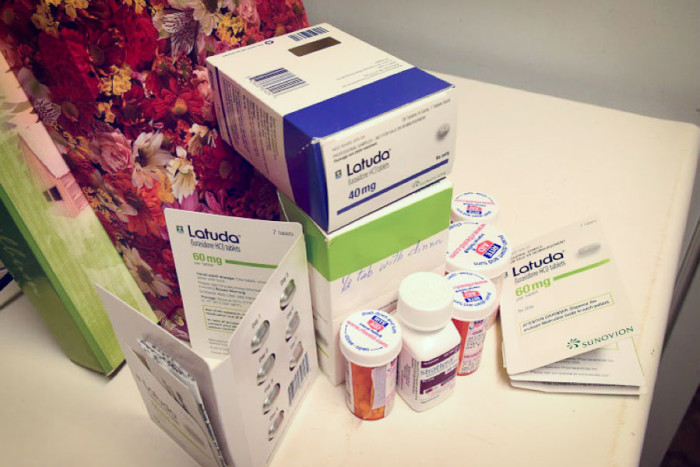
I moved to America when I was 12, and my family and I learned to rely on Western medicine alone for my mental health care. But the transition wasn’t easy.
Doctors prescribed a number of antidepressants and stimulants over the years to help deal with my symptoms of anxiety, depression, Attention Deficit Disorder (ADD) and Post-traumatic Stress Disorder (PTSD) — the last of which is fueled by memories of a childhood incident I would like to forget but can’t.
The long list included Celexa (Citalopram), Wellbutrin, Propranolol, Latuda, Prazosin, Clonidine and Strattera. Currently, I only take Strattera for my ADD and Propranolol whenever I get anxious.
Eventually, they say I will be weaned of all my medication. But for now, a day I go without taking a pill is often a bad one. Though the pills help me function, they also make me feel caged-in, hopeless and ultimately powerless. I didn’t consider looking for alternatives until recently. And even then, I assumed shamanism wouldn’t be an option available to me here in the United States.
It turns out I was wrong.
“A lot of the people that come to me for mental illness actually have something that has either attached themselves to them or gotten inside of them.”
“Typically what happens is people come to me when they’ve already gone to their doctor, they’ve gotten their prescription, they’ve worked with a counselor, and they’re still stuck,” said Janet Partlow, who runs Yerba Buena Herbal Consulting out of a two-story redbrick building called Westside Wellness Center in Olympia.
Partlow has studied healing traditions for 20 years. She prefers to call herself a “shamanic healer” rather than a shaman. Her shamanism draws from the Celtic and Peruvian Q’ero traditions. She keeps diplomas on her wall as evidence of her background in Western medicine.
“The central tool of almost any shamanic healer is to travel into the world of spirits and to consult with spirits on behalf of the client,” Partlow said.
She treats mental health by performing limpias with raw eggs, just like by abuelita did, as well as consulting with spirits and prescribing herbal treatments.
“I almost always recommend herbs because there is sort of a physiological component,” she said. “In depression in particular, usually people’s biochemistry is off.”
Partlow suggested Rhodiola and St. John’s Wort, in combination with Holy Basil (a natural stress-relieving substance or “adaptogen” in herbal medicine) to treat my symptoms of depression.
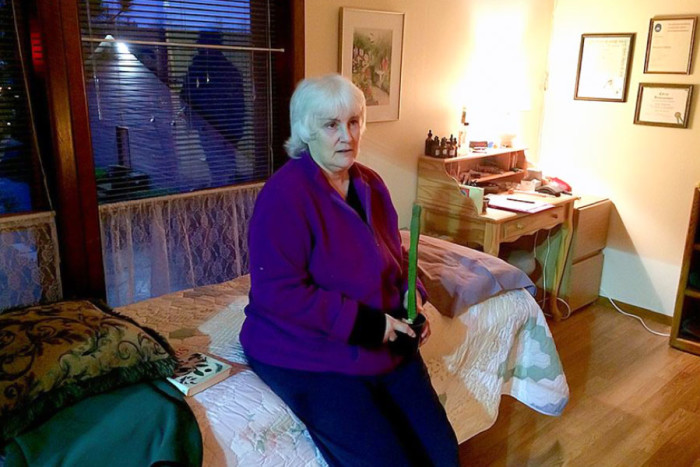
Like many shamans, Partlow consults spirits and the patron saints of certain plants, St. Pedro for example, the patron saint of Echinopsis pachanoi, a species of mescaline found in the Andes.
Other healers choose to work exclusively with spirits and deities because they associate mental illness with spiritual crisis, such as a possession.
“A lot of the people that come to me for mental illness actually have something that has either attached themselves to them or gotten inside of them,” said traditional healer Peter Brown, who advertises himself as a granicero, which means “weather worker” in Nahuatl.
The thought of something having attached itself to me left me feeling uneasy. I wondered how he could possibly tell if I had inadvertently been possessed.
“There are quite a few realms, worlds of existence, taking place alongside the ones that most people see and feel,” Brown said. “The shaman goes into these realms to learn and to help.”
His consultory is set down a dwindling dirt drive in North East Olympia. On his website, Brown said he received his calling from “the Cloud People.” His work consists of speaking to the gods and deities he has relationships with on behalf of his clients. He receives answers to his questions in the form of visions.
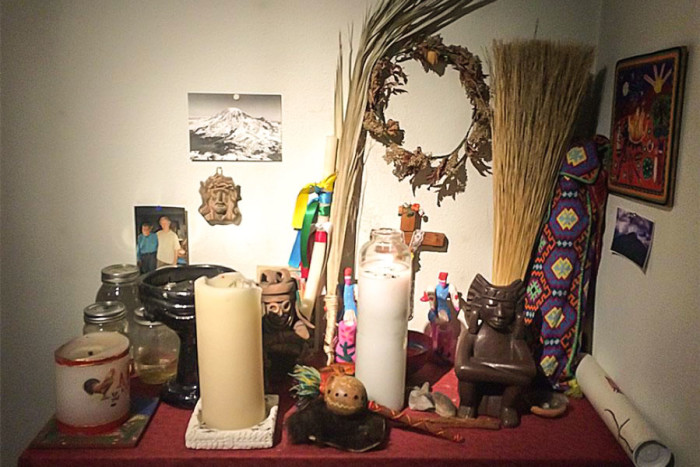
“They could show me their childhood or they could show me a life before this lifetime; it depends on what is going on with the person,” he said. “Then they work with me or through me to help that person in whatever capacity.”
As with Partlow, the patients who seek Brown out for mental health care have usually already tried and failed to obtain results from psychotherapy.
In recent years the national practice of shamanism has began to integrate many cultural traditions into a single doctrine. Christine Wallace, a shamanic healer who has studied indigenous and core shamanism since 1998, introduced me to the modern concept of core shamanism.
“Core shamanism is looking into different cultures that practice shamanism and drawing from their methods, whether they are from Peru or from Mongolia,” Wallace said.
Wallace’s sessions involve “energetic clearing and restoring.” She employs “extraction and soul retrieval” practices to treat mental health with the intention of helping clients feel restored.
“If someone has a condition Western medicine has labeled, their ancestors and their ideal selves come with them into the session seeking support,” she said. “They show up in their power and I show up in my power.”
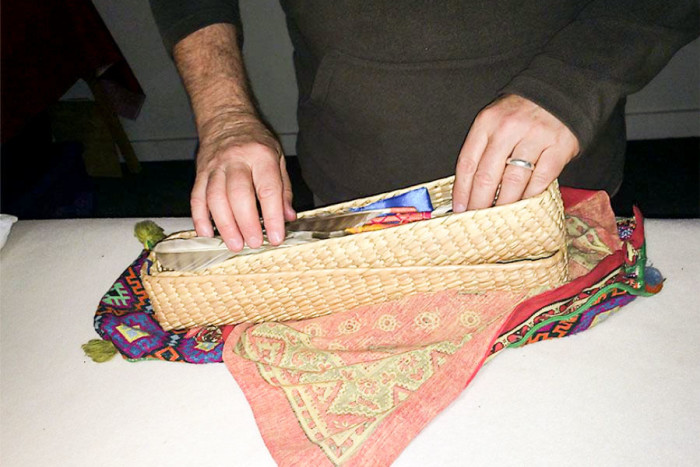
People who suffer from depression and anxiety like I do have experienced the vivid grip of an unseen but incredibly strong force, one that is greater than any common ailment but maybe not as visceral as a broken bone.
We know what it’s like to feel impotent and alone in the battle against it. We know what it’s like to be dependent on prescription medicine to survive through the next day, to numb ourselves, or feel anything at all.
The Western narrative on mental illness is one of weakness and lack of control. In contrast, every shamanic healer I met here in Washington made mention of power in some form. Partlow draws power from her herbs, Brown from his deities and Wallace from her patients and their ancestors.
Meeting healers here who draw on some of the same traditions as Don Pablito and my abuelita Rosa back in Peru helped me reconnect with my roots and embrace an alternative path to treat my mental illness.
I don’t want to tie my peace of mind to intake forms and pill bottles anymore.


Great article Cristina! It speaks to the same themes of the movie I am working on, CRAZYWISE. Thank you for speaking out and helping the world see that there is another way to think about mental health issues!
Nice!
Nice. I am a Ceann’luiL ( Walker between worlds). I live in Westport WA.
I have been trying to establish a practice here. I was chosen my spirit at birth. Felt more at home in nature than church. Joined the navy became a nurse then medical scientist. Was discharged, heavily medicated for seeing and speaking with spirits. Label a number of illnesses. I feared living more than death. Attempted suicide a few times. Was told by a VA Doctor from south America, you are an empathetic person, a Spiritual healer go find a shaman. I did, train and have for the past 5 years increased my knowledge. I have had clients. Any advice you can give me would be appreciated. I have placed it in the hands of the ancestors.